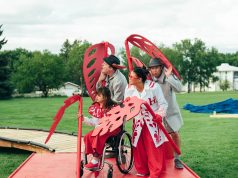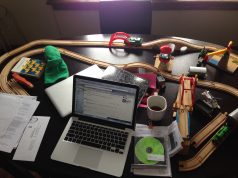This is the fifth in a series of articles capturing the planned conversations and discussions at the inaugural Festival of Live Digital Art (foldA), in Kingston ON, June 19-June 21, 2018. Patrick Blenkarn writes about a conversation between Laura Nanni, Trevor Schwellnus, and Daniele Bartolini that was presented in the Studio Theatre of the Isabel Bader Centre for the Performance Arts titled “Reality Augments Theatre”.
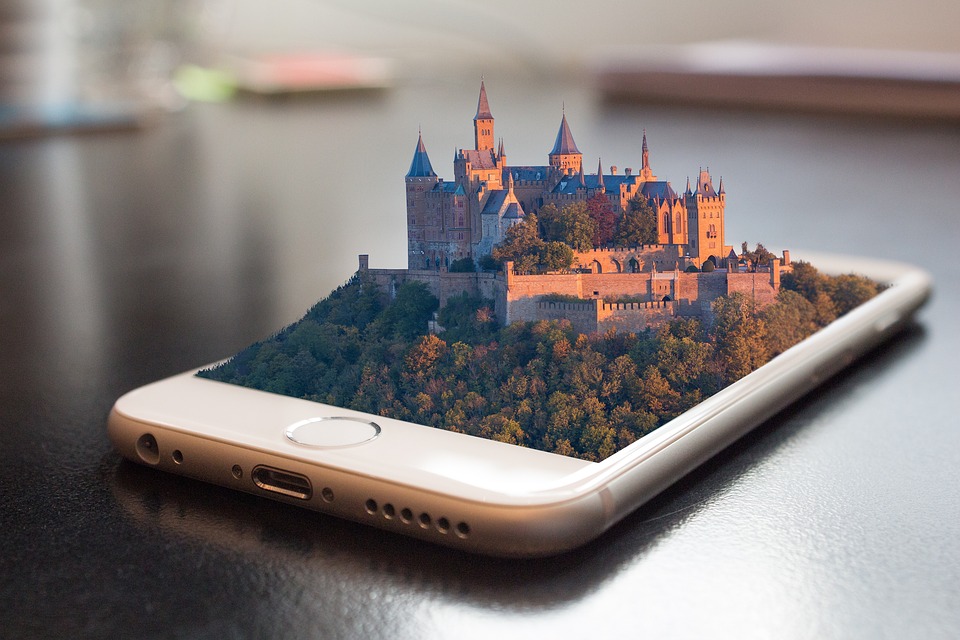
THE INVITED THINKERS:
Three Toronto-based artists—Laura Nanni, Daniele Bartolini, and Trevor Schwellnus.
THE THOUGHT TO THINK ABOUT:
How does reality augment theatre?
THOUGHTS ON THOUGHTS:
Each artist presented and reflected upon the ways they have sought to infuse or engage their practice with ‘reality’. Nanni discussed her collaborations with Sorrel Muggridge; Bartolini his recent performances, The Stranger and Invisible City; and Schwellnus showed design-focused excerpts from Aluna Theatre projects that bring the live human body into dialogue with digital design. Nanni and Bartolini’s examples sparked a greater discussion centring on one-on-one performances, which was complemented by Schwellnus’ reflections on “resisting the power of the algorithm” within theatrical works—a wonderfully philosophical sounding expression that I see to be equally applicable to his design and media practice and the performance scores of Nanni and Bartolini.
Of all the ideas floated in the discussion, I was most excited to reflect upon Nanni’s and Bartolini’s reference to ‘reality’ as something that has the power to break some of the codes that have ossified our capital ‘T’ Theatre institutions—principally theatrical time and theatrical space. One can imagine including ‘reality’ in a variety of ways. For both Nanni and Bartolini, it seems most potent in the form of a participating audience member in the context of one-on-one performances. The unique quality of an unrehearsed participant enables a kind of special flexibility, spontaneity, and intimacy within a work.
Unfortunately, the ‘reality’ that a participant brings with them is up against the pragmatic ‘reality’ of how we as performance makers present our work. The pragmatics of presenting performances that incorporate that little extra realness, that unrehearsed component, can be incredibly restricting on how much we can bend and twist the medium of theatrical performance. Making one-on-one works sustainable (if one values such a thing) often requires a festival setting with many time slots and a gruellingly repetitive schedule. While there is usually a buffer time built between each experience, the restriction on time is always present, ultimately confining us (and our participants) within timeframes that feel ‘safe’ by Canadian standards. (Bartolini’s Invisible City directly challenges this by taking place over multiple days.)
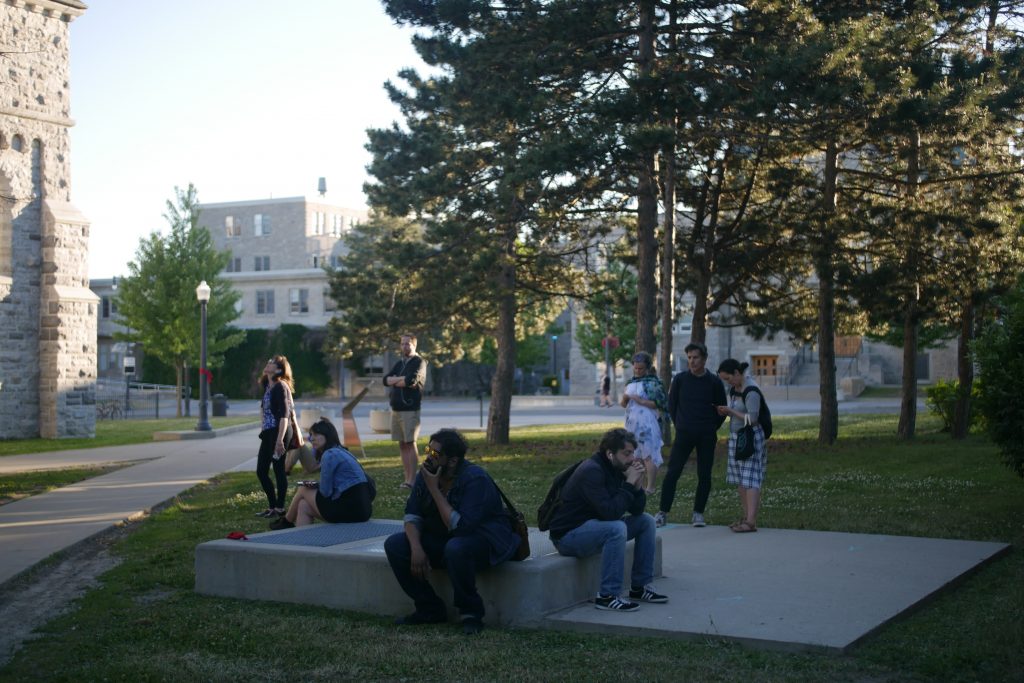
In my experience, that pragmatic restriction on time, for example, often translates to how much ‘reality’ the spectator/participant can contribute to a work. Some artists have made works that make me feel like I was filling a void in a structure (a variable within a rigid algorithm), others have made works that make me feel recognized, heard, and needed for the performance to be alive. In the latter, for example, there’s a chance that my response to a question from the artist might actually change the next question the artist asks me.
There was a time when even rigid participant structures were new and exciting, but, personally, I’m feeling pretty numb to them these days and really questioning the artistic desires they spring from. What are the values that underscore an artist’s desire to collect ‘real data’—you or me—in the form of audience members’ experiences/opinions/confessions? And how is that desire compounded with the ‘reality’ of a performance being prefaced by a transferring of funds from audience to artist? To some, the intimacy of the one-on-one performance can be a tiny utopia. To others, that dream of utopia is suffocated by the ‘reality’ of the spectator paying for intimacy and being a consumer of a pre-programmed theatricalized ‘reality’.
All of this brings me to Schwellnus’ ‘resisting the power of the algorithm’. There wasn’t enough time for Schwellnus to expound a master theory on the phrase, but to my mind the phrase connects all the concepts of structure, participation, and flexibility that I’m still chewing on. For me, this idea has come to mean refusing to put a performance score or structure on a pedestal. It means making the structure of one’s work—especially if it is one-on-one—flexible enough so that participants can be more than confessors in a confession box, so that ‘reality’ can really do the work of augmenting theatre in more ways than a pre-determined, artist-sanctioned one.
In light of that call for ‘more ways than one’, I’ll just say that the understanding of ‘reality’ employed in our discussion—though provoking—struck me as limited, particularly within the context of foldA. The ‘reality’ we described as an interrupting force in the one-on-one performances was still largely that of human life. The discussion did not consider, for example, digital ‘realities’ as equally real. If code breaking is of great importance to us as artists trying to work with this medium in this century, then I would argue virtual participants and their virtual ‘realities’, could similarly break these same ossified codes.
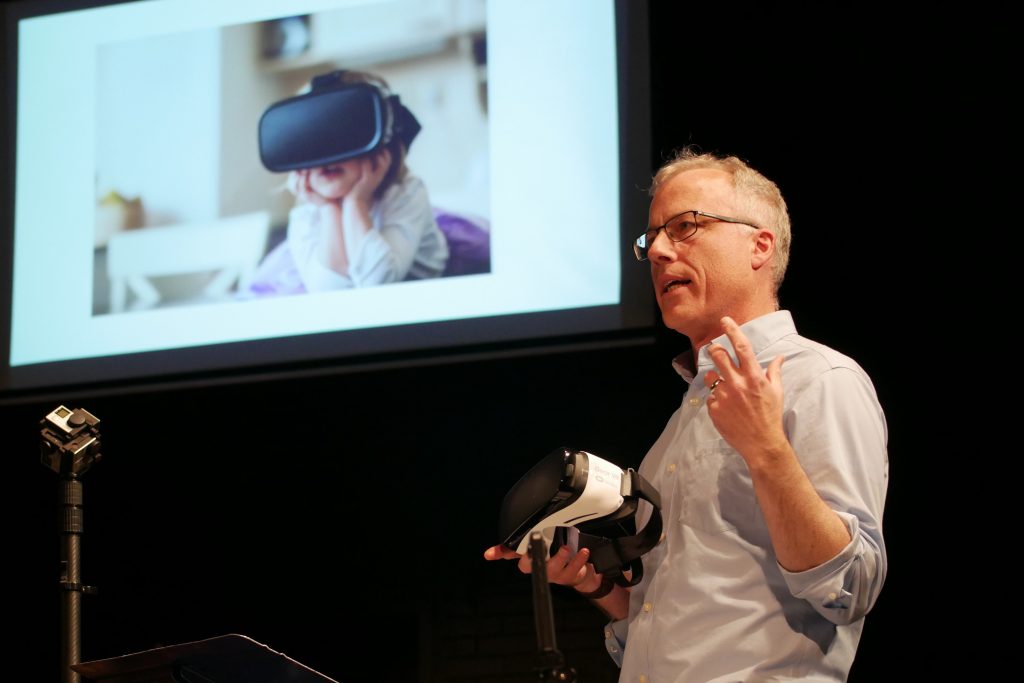
Resisting the power of the algorithm could also mean resisting the script that suggests the only reality with which we can ‘augment’ theatre is that which belongs to human experiences/interactions outside of a traditional theatrical context.
Theatre has a great capacity to consume other art forms, objects, and events. Finding ways to digest the very real and very quickly developing technologies of video games, 3D design, VR, and more into one’s performance practice would spark new possibilities for breaking theatrical time and space, and these technologies should be seen as equally part of the constellation of real spaces, real materials, and real experiences we both inhabit everyday and traditionally exclude from theatrical contexts.







